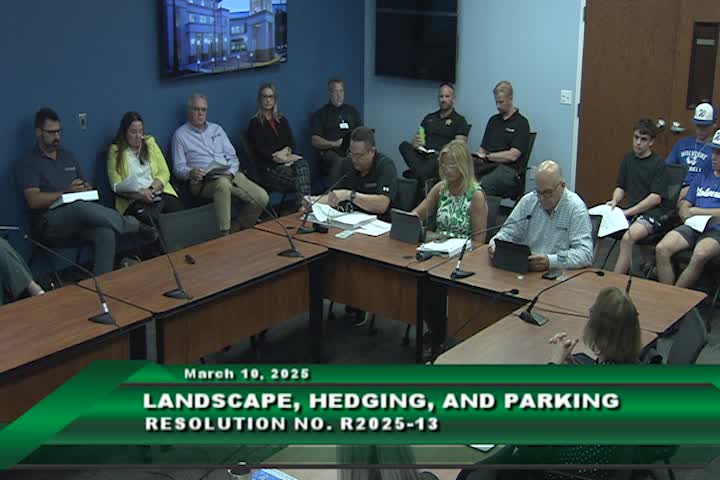City plans Calusa hedge to redirect foot traffic and preserve grass area
March 11, 2025 | Wellington, Palm Beach County, Florida
This article was created by AI summarizing key points discussed. AI makes mistakes, so for full details and context, please refer to the video of the full meeting. Please report any errors so we can fix them. Report an error »

During a recent government meeting in Wellington, Florida, officials discussed plans to address ongoing issues with pedestrian traffic in a designated dry retention area near Ken Adams Way. The primary focus was on the installation of Calusa hedges to deter individuals from walking through the grass, which has been damaged due to heavy foot traffic from nearby parking lots.
The proposed hedges aim to redirect pedestrians to designated pathways, thereby preserving the integrity of the grass area. Officials noted that the current situation has led to a well-worn path through the grass, which not only damages the landscape but also raises concerns about safety and accessibility. The discussion highlighted the challenges of creating a formal pathway, particularly due to the wet conditions that can arise in the retention area.
While some officials suggested that a concrete or asphalt pathway could be a solution, concerns were raised regarding the costs and the need to meet Americans with Disabilities Act (ADA) requirements. The conversation underscored the complexity of balancing accessibility with environmental considerations, as any new pathway would need to be designed to accommodate all users, including those with disabilities.
The meeting also touched on the logistics of modifying the dry retention area to create a wider path, which could potentially be more expensive and complicated than simply installing hedges. Ultimately, the consensus was that the hedges would serve as a temporary measure to guide pedestrians safely around the area while preserving the landscape.
As Wellington continues to grow, discussions like these reflect the community's commitment to maintaining public spaces while addressing the practical needs of its residents. The next steps will involve finalizing the hedge installation and monitoring its effectiveness in reducing foot traffic through the grass area.
The proposed hedges aim to redirect pedestrians to designated pathways, thereby preserving the integrity of the grass area. Officials noted that the current situation has led to a well-worn path through the grass, which not only damages the landscape but also raises concerns about safety and accessibility. The discussion highlighted the challenges of creating a formal pathway, particularly due to the wet conditions that can arise in the retention area.
While some officials suggested that a concrete or asphalt pathway could be a solution, concerns were raised regarding the costs and the need to meet Americans with Disabilities Act (ADA) requirements. The conversation underscored the complexity of balancing accessibility with environmental considerations, as any new pathway would need to be designed to accommodate all users, including those with disabilities.
The meeting also touched on the logistics of modifying the dry retention area to create a wider path, which could potentially be more expensive and complicated than simply installing hedges. Ultimately, the consensus was that the hedges would serve as a temporary measure to guide pedestrians safely around the area while preserving the landscape.
As Wellington continues to grow, discussions like these reflect the community's commitment to maintaining public spaces while addressing the practical needs of its residents. The next steps will involve finalizing the hedge installation and monitoring its effectiveness in reducing foot traffic through the grass area.
View full meeting
This article is based on a recent meeting—watch the full video and explore the complete transcript for deeper insights into the discussion.
View full meeting